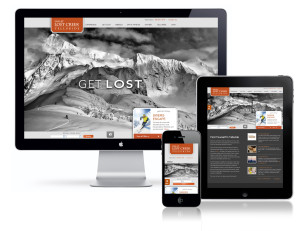Responsive design brings a variety of benefits – both for brand marketers and the consumers interacting with content across multiple devices. According to data from a December 2012 study conducted by eConsultancy, nearly 70 percent of client-side marketers described their experience level with responsive design as “average” or better, and more than half of that group described their companies as “ahead of the curve” or “state of the art” when it came to the design technique.
As advanced as some brands and in-house digital marketers may believe they are in responsive design, there are still quite a few challenges that optimization experts and digital marketers must heed. Here are some lessons CMOs can use to get strategic in their approach while driving real, impact-filled growth to the bottom line.
Rule #1: Don’t Become Complacent
Since the mobile marketplace is extremely dynamic and the mobile consumer is ever changing, don’t become complacent just because you launched a responsive-design site. At the beginning of 2013, tablet users were already showing a higher conversion rate than desktop shoppers. Moreover, 20 percent of mobile users use it as their primary device. This means consumers are evolving more quickly than you may think, so closely monitor your analytics. In fact, companies like Gilt have seen a 100 percent increase in mobile users in a single year.
Rule #2: Always Be Refining
Continually develop and refine new design iterations that work seamlessly across multiple screen sizes and functionalities (e.g., touch, swipe). Being immersive is just as important as being intuitive. Pinch, swipe and zoom are features that smartphone and tablet users know and love. In the early days of responsive design, it was said that these were features that couldn’t be tapped into. With today’s more common blend of adaptive and responsive design, we know that this is not the case. Developers have touch-screen-specific controls at their disposal, and customization can be achieved through injection of JavaScript, for example. It’s important to strike the right balance between optimal performance (page-load time) and customization, as the two are interrelated.
Rule #3: Never Stop Testing and Learning
Always be testing and learning with your responsive-design site so that key information and functions are visible, prioritized and accessible to people regardless of what device they are using. Getting shoppers to move through the entire funnel – starting on the home page and moving to key product and landing pages all the way through the checkout process – is no easy feat. Each consumer, be it a first-time visitor or a longtime brand advocate, wants something different and unique from the checkout process. For a big-box apparel retailer, for example, free shipping can prove effective in rewarding high-value customers and cultivating loyalty among a brand’s average customers. This is where testing and learning play an integral role in pinpointing the optimal threshold for free shipping to boost online sales and grow the brand’s market share amid competitors. The data and insights delivered from a test-and-learn strategy could very well disprove brand assumptions and, in turn, generate the type of ROI brands seek such as higher average order value, as well as an increase in purchase conversions and overall revenue.
Rule #4: Leverage All Data
Even the most basic site analytics can reveal huge potential opportunities. Incorporating analytics early in the development of a responsive-design site is important. Set your responsive breakpoints you seek to track within your analytics solution and run a report for traffic to specific pages by device type. You’ll be able to glean a wealth of information about which areas of your site are seeing the heaviest tablet traffic, compared to areas with significant upticks in smartphone-only traffic. You’ll also be able to see which areas produce low traffic or poor conversions. This tactic can help you optimize the customer experience to drive customer engagement, loyalty, conversions and revenue consistently for the long haul.















